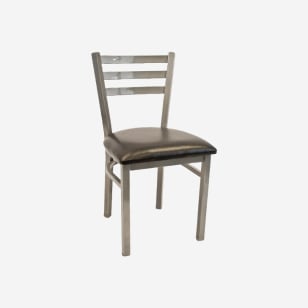Nearly half of adults have worked in the food industry at some point in their lives. Nearly 50% of restaurant/café employees have expressed their hopes in owning their restaurant one day. For many, that dream is realized; however, no one wishes to run a failing restaurant. Experts who have been through the ringer and understand the challenges that await for restaurant owners-to-be offer tips as well as their personal experiences in hopes to inspire you to envision and realize your dream restaurant.
Creating Your Dream Restaurant

Take Tyson Cole, for example. He is one of the Food & Wine magazine’s 2005 Best New Chefs, 2011 James Beard Foundation Best Chef Southwest, and co-owner of the Japanese restaurants Uchi and Uchiko in Austin, Texas. His story began when he quit his job after he was told that being white hindered on his ability to make sushi. Cole was rehired two days later but he was relegated to working in the back of the kitchen where diners couldn’t see him. He was once fired for serving a guest free dessert but was rehired when his manager found out that the guest was Denzel Washington.
Though the future may look hopeful for the food industry, even owners and chefs with extensive backgrounds realize that there are no guarantees in this business. Even the most successful owners will tell you that this isn’t an industry that will get you rich quickly. The restaurant business, like most business ventures, requires hard work, competent staff, great concept, patience, convenient location, excellent waiting/customer service, high quality restaurant furniture, strategic planning, and commitment. Unfortunately, many restaurants fail during their first year in operation due to lacking these components.
Experts in the food industry like Cole offer guidance to restaurateurs in not only creating their dream restaurant also realizing success in their endeavors:
The Big 3
A chef (including kitchen/wait staff), location, and concept measure a restaurants success or lack thereof, in certain circumstances. All 3 encompass each other. Both the location and staff must fit the concept. Many restaurateurs overlook location which can hurt their business. Accessibility is a crucial point for conceptualizing a restaurant. The more convenient the location of the restaurant is, the greater chances it has of success. Fast casual restaurants are prosperous because they are incredibly accessible in location, price point, and brand.
Invest in your guests and restaurant design

The most important investments that restaurateurs make should be towards adding value to guests which extends to purchasing commercial grade furniture. A lot of restaurant owners admit making the mistake of being frugal with their restaurant equipment purchases on items such as chairs, tables , dinnerware, and even food. The truth of the matter is that everything a diner touches is important. Therefore it behooves restaurateurs to decide on a percentage of their revenue to invest towards making improvements that affect diners and enhance the restaurant’s appearances.
While some restaurant owners choose to spend money on advertising or marketing their dishes on various social media channels, others use gift cards and send a lot of complimentary dishes to tables hence making dining experiences for guests personal. In other words, spending as much money as your budget will permit on diner experience can be beneficial to your restaurant in the long term. Start by spending money on your current diners as doing so is the best way to generate positive feedback and recommendations that can potentially expand your customer base by attracting new customers.
Obtaining a license and/or permit for your restaurant

License requirements vary by state. For example, eight business licenses are needed to open up a single restaurant in San Francisco while fourteen licenses are mandatory for a restaurant in Chicago. Missing even one license can result heavy fines and serious penalties. Restaurant owners seemingly have to deal with an endless amount of issues from staffing their restaurants to suppliers. One of the most critical yet perplexing steps to operating a restaurant is licensing.
As reiterated before, license criteria and requirements that need to be met are derived from state, federal, county, and local regulations that differ between regions. Statics on industry data states that restaurant owners spend at least up to twenty hours researching their licensing requirements – that’s just the beginning of the process. Permits and licenses require regular renewals. While a lot of paperwork is involved, compliance doesn’t necessarily have to be harrowing. With organization, preparation, and further assistance from a trusted adviser, you can finally concentrate on building up your restaurant once every license requirement has been met. Your business will be operational sooner than you think!
Keep an Open Mind

Generally speaking, many businesses are started with a crafts-person with envisions and ideas for a product. Rarely does an idea evolve to a business venture unless that crafts-person partners with someone who can develop strategies and optimize ideas. A restaurant owner may have brilliant and creative ideas but in most circumstances can’t flourish without a business partner.
Communication and focusing on staff is the tipping point to running a successful restaurant. There is only so much one person can do on his/her own. Teaching and delegating responsibilities to the restaurant staff enables owners to do more. Partners and staff may even know certain things that restaurant owners do not so selecting people who are smarter than you can work to your advantage.
Products Related to this Article





